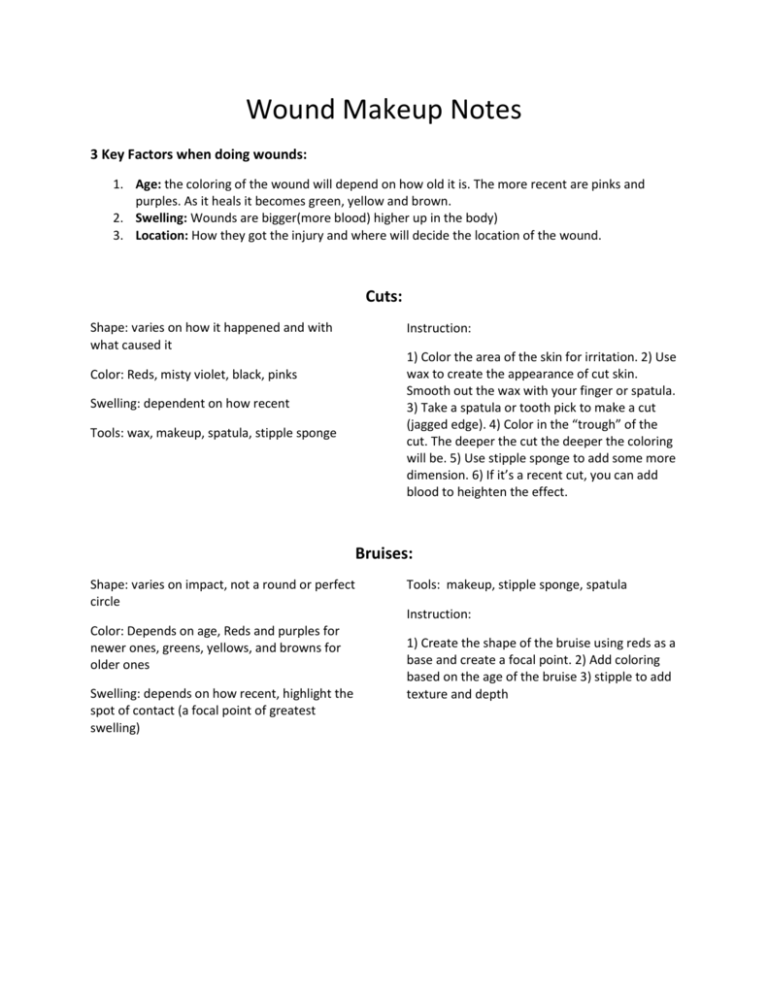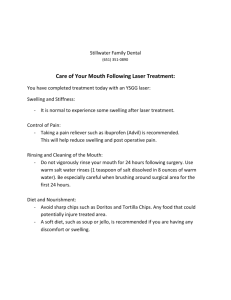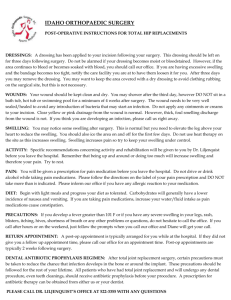Lesson 6.Wound Makeup Notes
advertisement

Wound Makeup Notes 3 Key Factors when doing wounds: 1. Age: the coloring of the wound will depend on how old it is. The more recent are pinks and purples. As it heals it becomes green, yellow and brown. 2. Swelling: Wounds are bigger(more blood) higher up in the body) 3. Location: How they got the injury and where will decide the location of the wound. Cuts: Shape: varies on how it happened and with what caused it Color: Reds, misty violet, black, pinks Swelling: dependent on how recent Tools: wax, makeup, spatula, stipple sponge Instruction: 1) Color the area of the skin for irritation. 2) Use wax to create the appearance of cut skin. Smooth out the wax with your finger or spatula. 3) Take a spatula or tooth pick to make a cut (jagged edge). 4) Color in the “trough” of the cut. The deeper the cut the deeper the coloring will be. 5) Use stipple sponge to add some more dimension. 6) If it’s a recent cut, you can add blood to heighten the effect. Bruises: Shape: varies on impact, not a round or perfect circle Color: Depends on age, Reds and purples for newer ones, greens, yellows, and browns for older ones Swelling: depends on how recent, highlight the spot of contact (a focal point of greatest swelling) Tools: makeup, stipple sponge, spatula Instruction: 1) Create the shape of the bruise using reds as a base and create a focal point. 2) Add coloring based on the age of the bruise 3) stipple to add texture and depth Scars: Shape: varies on the cause of wound and how it healed Color: depends on the depth of the wound and age of it Tools: wax, makeup, spatula Instruction: 1) Color the area where the scar will be. 2) Apply the wax where the skin will build up to make the scaring. 3) Add texture to the scar using the stipple sponge to add a light color. Black eye: Shape: Varies, depends on the object that it the eye and at what location it hit the eye. It usually affects the area under the eye. Color: Depends on age, Reds and purples for newer ones, greens, yellows, and browns for older ones Swelling: depends on how recent, highlight the spot of contact (a focal point of greatest swelling), the swelling starts from that point. Tools: makeup, stipple sponge, spatula, fingers Instruction: 1) Find the focal point of contact 2) work around that area 3) use colors based on how old it is and the impact of the object Burns: Shape: varies on the spillage or contact Instruction: Color: reds, black for really charred skin 1) color skin for irritation 2) cover wound with latex 3) can pull latex a part to create holes or blisters 4)add black if the skin is charred Swelling: focal point of most contact Tools: makeup, latex, spatula Scrapes/ Abrasions: Shape: varies on the spillage or contact Color: reds, black for really charred skin Swelling: focal point of most contact Tools: makeup, latex, spatula Instruction: 1) Color skin for irritation area 2) find color you want for scratch, place it on stipple sponge and drag it in the direction it occurred. 3) Pat stipple sponge around the wound to make it realistic 4) for recent wound you can add blood





